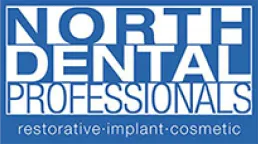Dental bridges are a reliable solution for replacing missing teeth, often restoring both the appearance and function of your smile. But getting a dental bridge is only the first step. To ensure its longevity and keep your mouth healthy, it’s essential to maintain proper oral hygiene. Neglecting care can lead to gum disease, decay in surrounding teeth, and damage to the bridge itself.

Understanding Your Dental Bridge
Before diving into care tips, it’s helpful to understand what a dental bridge is. A traditional dental bridge typically consists of one or more artificial teeth (pontics) anchored in place by dental crowns placed over the adjacent natural teeth (abutment teeth). While the bridge often restores function and aesthetics, it also creates new surfaces and spaces that require specific cleaning techniques.
The design of a dental bridge makes it slightly more challenging to clean than natural teeth, especially underneath the artificial tooth. Plaque and food particles can accumulate beneath the bridge and around the supporting teeth. This increases the risk of complications if not properly removed.
Brushing Techniques for Bridges
Brushing twice daily is still a fundamental part of oral hygiene when you have a dental bridge. Use a soft-bristled toothbrush and fluoride toothpaste to gently clean around the bridge and the rest of your teeth. Pay special attention to the gum line and the area where the bridge meets your natural teeth. Using an electric toothbrush can sometimes provide a more thorough clean, especially in harder-to-reach areas. Try to avoid brushing too aggressively, as this can irritate the gums around the bridge or cause gum recession over time. A gentle but consistent approach is best.
Flossing Around and Under the Bridge
Flossing is especially important for people with dental bridges because standard floss may not easily pass between the artificial tooth and the gum. To get under the bridge, you’ll need to use special flossing tools such as floss threaders, super floss, or interdental brushes. These allow you to clean underneath the pontic and remove plaque that could otherwise build up and cause gum inflammation or decay in the abutment teeth.
Floss threaders work by guiding dental floss under the bridge, allowing you to sweep it along the gum line. Super floss has a stiff end for threading, a spongy section for cleaning under the bridge, and regular floss for cleaning between natural teeth. Water flossers can also be very effective, especially for people who find manual flossing difficult. These devices use a stream of pulsating water to remove food and plaque from hard-to-reach areas.
Professional Cleanings and Checkups
Regular visits to your dentist are vital when you have a dental bridge. Your dentist will monitor the condition of the bridge, the health of your gums, and the integrity of the supporting teeth. During these visits, your dental hygienist can clean areas that are difficult to reach with home tools, helping to prevent plaque buildup and gum disease. Professional cleanings every six months are generally recommended, but your dentist may suggest more frequent visits if you’re at higher risk for dental problems. If you notice any changes, such as discomfort, bad breath, or a loose bridge, it’s important to schedule an appointment promptly.
Diet and Lifestyle Considerations
What you eat also plays a role in maintaining your bridge and overall oral health. Try to limit sugary and sticky foods that can promote decay in the supporting teeth. Chewing hard items like ice or hard candy can also damage the bridge or cause it to become dislodged. Maintaining a balanced diet rich in vitamins and minerals supports gum health and helps keep your remaining teeth strong. Smoking and excessive alcohol consumption can also contribute to oral health problems, including gum disease and bridge failure. Quitting these habits not only improves your overall health but also increases the lifespan of your dental bridge.
Dental Bridge Care in Chicago, IL
At North Dental Professionals, we understand the importance of a complete bite. If you have missing teeth, a dental bridge could help restore your smile and quality of life. Contact our office today to schedule a consultation and learn more about your treatment options for tooth loss.
